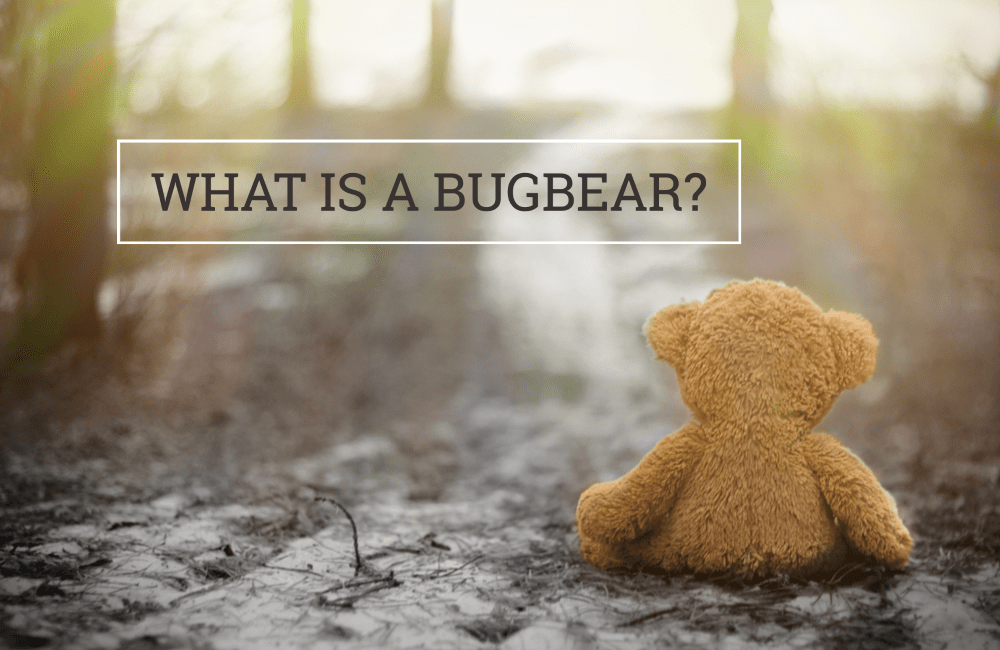
Each week here at the Australian Writers’ Centre, we dissect and discuss, contort and retort, ask and gasp at the English language and all its rules, regulations and ridiculousness. It’s a celebration of language, masquerading as a passive-aggressive whinge about words and weirdness. This week, is it too much to bugbear?
Q: Ugh, another one.
A: Another what?
Q: This writer has used “it’s” when they should have used “its”. It’s a real bugbear of mine.
A: We’ve actually already discussed it’s vs its. You’ll find that chat here.
Q: No, I actually want to know about the word “bugbear”. Where does it come from? And is it a bug or a bear?
A: Ah, okay. Well, Macquarie Dictionary defines the noun “bugbear” as any source, real or imaginary, of needless fright or fear.
Q: Huh? But I’m not scared of people who use “its” wrong. I simply pity them.
A: Then you’ll want the SECOND meaning, which is defined as a continuing cause of irritation or annoyance. For example, “the misuse of the apostrophe has always been her bugbear”.
Q: That’s the one. But why a “bugbear”? I’ve never seen one of those at the zoo.
A: The word is actually quite old – dating all the way back to the 1580s. And to understand it, you need to look at the original meaning of the word “bug”.
Q: Bugs didn’t always mean insects?
A: Nope. In fact, the earliest reference to bugs as insects wasn’t until around 1620. Before this, the word had evolved from the 1300s Middle English “bugge” as something frightening like a goblin or scarecrow.
Q: Intriguing!
A: Other scary creatures that were the object of dread had similar names – such as the Scottish “bogill”, Welsh “bwg” and Irish “bocanach”. At the same time, German also had the böggel-mann – similar to “bogeyman” we still use today.
Q: Oh, my Uncle Rupert is called “the bogey man” by his golfing buddies!
A: That’s likely related to his frightful game rather than scary persona.
Q: He actually once hit three eagles in a single round. They managed to resuscitate two of them…
A: Oh dear.
Q: So why doesn’t “bug” mean scary goblin anymore?
A: Language moved on. Although things like computer bugs are sometimes still referred to as “gremlins in the system” – a word likely derived from goblins. Fun fact, “gremlin” is quite new – first used by aviators in the 1920s to refer to small imaginary creatures that they blamed for mechanical failures.
Q: And back to “bugbear”?
A: As we said, it arrived during the 1500s and evolved from that earlier goblin-like scary meaning of “bug”. A bugbear was essentially a demon in the shape of a bear that ate small children.
Q: How small? Are we talking 12 and under? Theme park ride height guidelines?
A: Let’s just say that if you were a child, you wouldn’t want to be naughty or you might upset the bugbear.
Q: Then how did we go from scary monsters to grammatical annoyances?
A: The idea of a bugbear also being a figurative source of fear took hold quite early on – as early as the 1600s. As the monster itself faded from use, this more generic bugbear remained. There is still an element of fear involved, but most dictionaries tend to lump it in with lesser discomforts such as “any source of fear, anxiety or irritation”.
Q: Is it also related to the verb “bug” – as in “it really bugs me when actors on TV drink from takeaway coffee cups that are clearly empty”?
A: Haha, yeah that IS annoying. But that use of “bug” as in to annoy or irritate – while quite similar to the “bugbear” meaning – has actually only been in use since 1949. It is suspected to have come from swing music slang.
Q: So, to recap, these days a bugbear is more likely to cause worry or annoyance than terror?
A: These days, yes. We’ve domesticated and tamed what was once a very scary hobgoblin that ate children and have instead given it a desk job, money worries and grammar pet peeves.
Q: Poor creature.
A: By the way, during the mid-1800s, Americans sought to replace the word “bugbear” with “bugaboo” – largely meaning the same thing. It survives in that part of the world to this day.
Q: Lurking in the shadows, feeding mainly at night…
A: No, survives in the dictionary. It’s still not a real monster.
Q: Oh yes. I knew that. Ahem.
A: These things are just made up, to scare children.
Q: Of course. Obviously! Um, anyway, I need to go shopping for night lights now. Goodbye.
Do you have a question you’d like us to explore? Email it to us today!
About us
Contact us